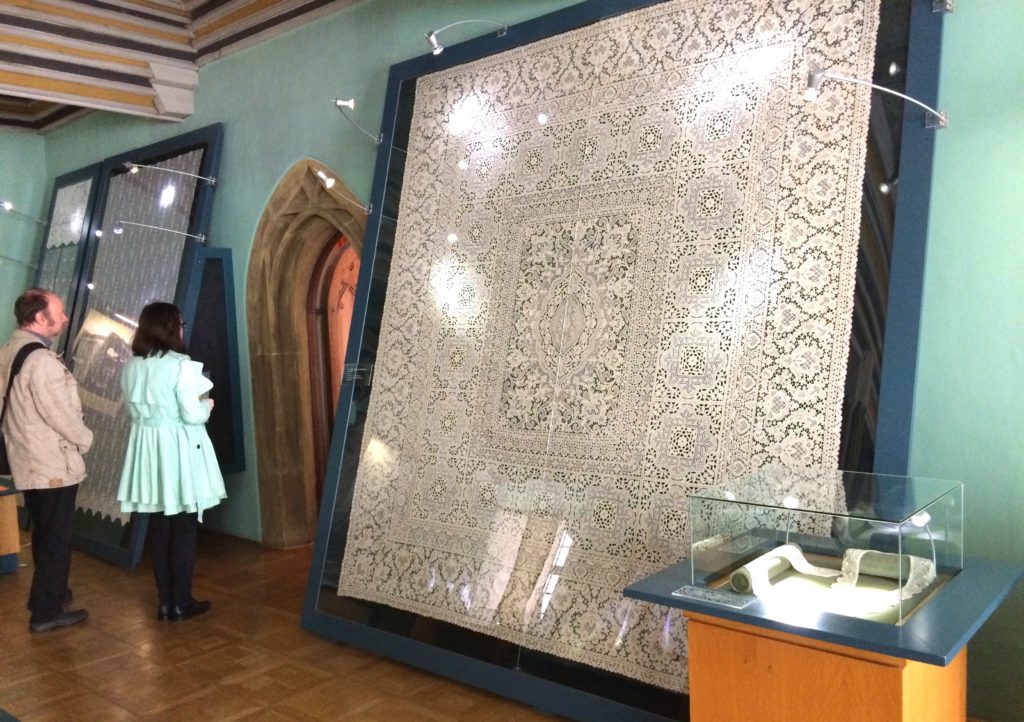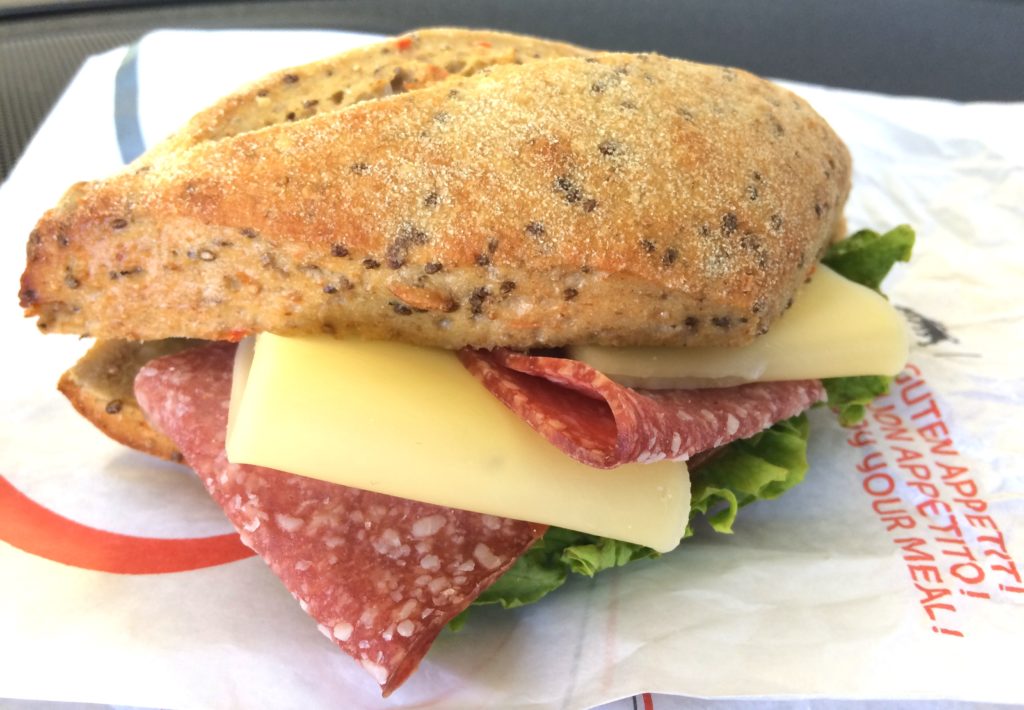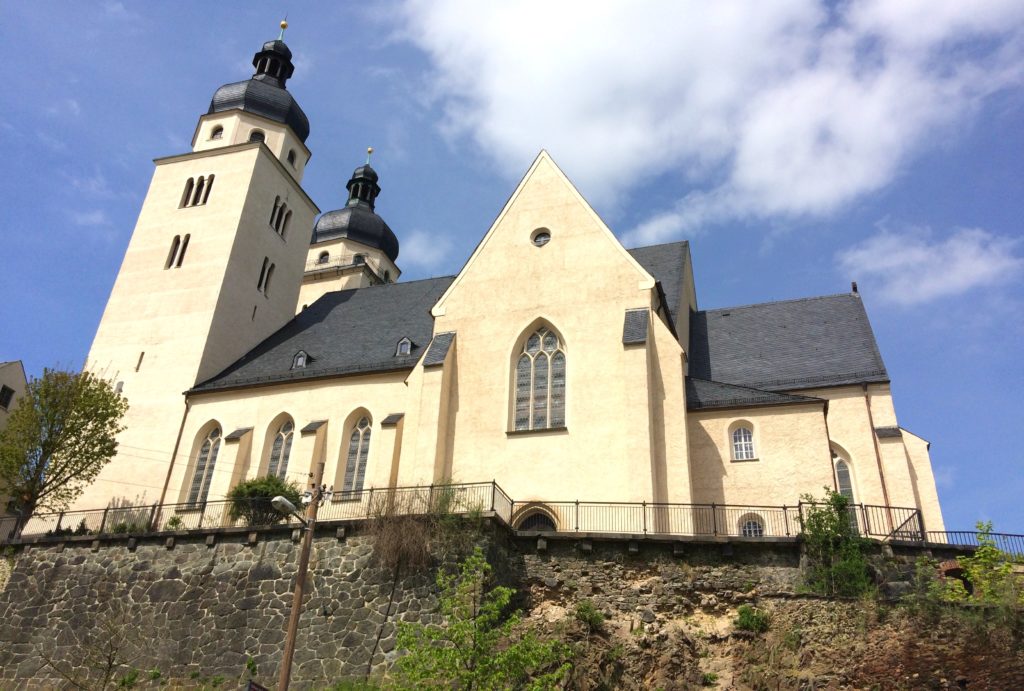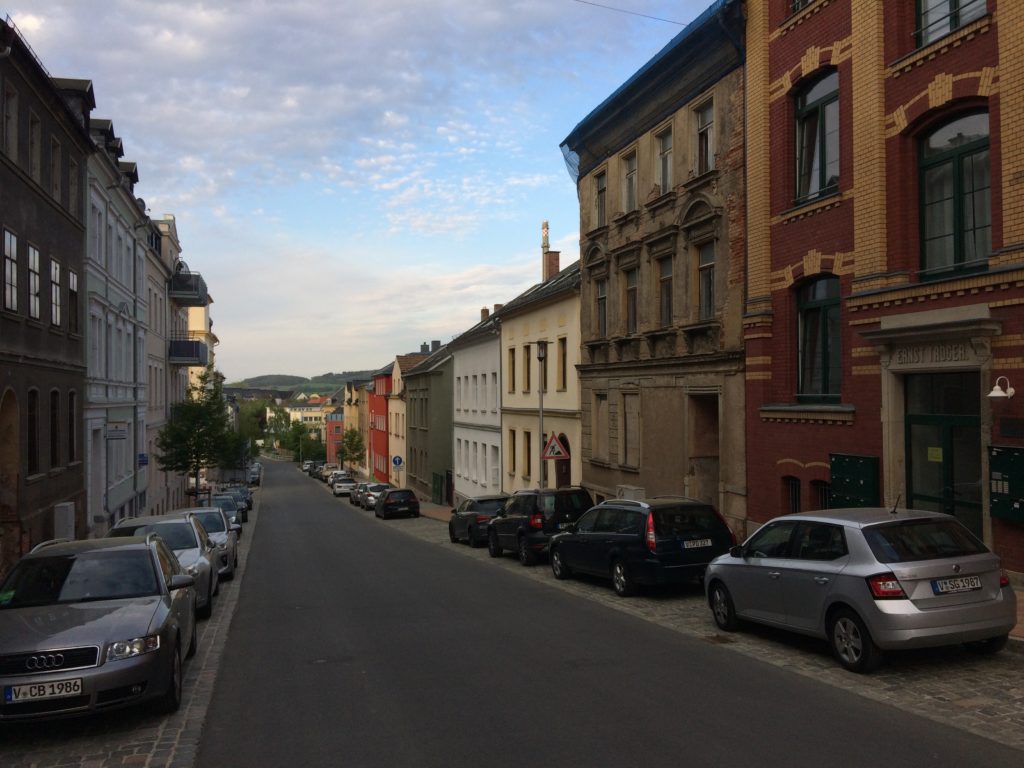Plauen
A few weeks ago after speaking at a software developer conference in Berlin Germany, I had the opportunity to take several personal days while there and I got to see some of the countryside! It was pretty great!
Plauen Germany is where my grandfather, Kurt William Leucht, lived from about the age of 4 until he left for America at age 18. Here are some more sights from Plauen as I explored the area and walked in my grandfather’s footsteps.
Friedensbrücke (Peace Bridge)
The Peace Bridge (Friedensbrücke) is a stone arch bridge built in 1905. The longest span is 90 meters which is nearly 300 feet. It’s one of the largest stone arch bridges in the world! There are no older bridges in the world containing this long of an arch span!
My grandfather was 9 years old when the bridge construction was finished, so I’m certain he would have marveled at this monster. He lived less than one mile (1.6 km) from this bridge, so he must have at least walked across it and under it as a teenager. Here’s what the bridge looked like in 1906.

And here are a few photos that I took of the bridge while I was there. It’s really quite impressive. Especially when you consider when it was constructed.

It’s quite difficult to get a photo of the entire bridge. It’s really big and there are lots of trees in the area.

The bridge is quite beautiful. The design is very organized and geometrical, but it also has some random elements mixed in. The bridge was badly damaged during the war, but it was restored quickly, even though that took a lot of the limited resources that were available to Plauen after the war.

Alte Elsterbrücke (Old Magpie Bridge)
The Old Magpie Bridge (Alte Elsterbrücke) near downtown Plauen is the second oldest stone bridge in Saxony and one of the oldest in Central Europe. It was first mentioned in documentation from 1244. The bridge has gone through many restorations over these many years. You can definitely pick out some sections that are more modern than others.

My grandfather lived about 2 miles (3.2 km) from this old bridge.

It’s a pretty neat bridge and it’s amazing how old it is and that it’s still standing.

Old Castle Looking Structure On Hill
Just one block from downtown Plauen and one block from both town squares, overlooking the entire town, sits this old fort or castle. I’m not sure which. It’s obviously under restoration right now. But I didn’t see any signage and I can’t find any information on the Internet about it either. Strange.

Whatever it is, it looks pretty awesome. And some of it is buried in what appears to be a hillside. But underneath that dirt, looks to be some really old walls and rooms. This was all completely fenced off for construction, so I couldn’t explore. I’m interested to find out the history of this structure and what exactly tourists in the future will be able to see and explore.

Spitzenmuseum (Lace Museum)
In my previous post, I mentioned Plauen’s textile and lace manufacturing revolution in the early 1900’s. My grandfather wrote this in his journal:
After graduating [high school], I obtained a job with Otto-Baum & Son, who manufactured and exported lace.
I’m not exactly sure what type of work he did or how long he did it, though. While I was in Plauen, I was unable to find any listings or address for this Otto-Baum & Son company, but I’m guessing that in 1913 or 1914, when my grandfather was 17 or 18 years old, small family run lace businesses were all the rage. The population of Plauen actually peaked in 1912 due to the textile and lace industry there.
So it would have been an absolute crime for me to skip the official Lace Museum (Spitzenmuseum) in town! The museum has on display, under glass, beautiful antique lace pieces such as these delicate gloves and scarf:

And some amazing clothing items too.

And also this incredible 1936 wedding dress. Sorry, I didn’t catch the dates on any of the other clothing items. I’m a dude. That’s my excuse. 🙂

I’m guessing that this is a tablecloth. Very cool. And the display case is also quite impressive!

As a dude, and also as an engineer, I was most excited to gaze at the old antique lace making machinery, as opposed to looking at the actual antique lace samples on display. But I believe that guys and gals alike can both appreciate this historical local museum.
So this machine apparently pumped out copy after copy of the same small lace pattern segment.

Here are some examples of the small lace pattern segments so you can see what the machine above produced. These examples are about 6 inches tall or so.

This is the same example, but much closer so you can see the detail. Basically this detail area contains two leaves with decorative honeycomb-like ribbing. Each leaf is about 3/4 of an inch. Pay close attention to the very short ribs on the right that are spanning between the two leaves.

This is the hand-drawn pattern that the operator used to “program” or to drive the giant machine. The leaves which are actually less than an inch long in real life are about 8 or 10 inches long on this pattern. And the tiny little, just a few millimeters long, ribs that span between the two leaves are an inch or more long on this pattern.

This display shows an example of how some of the lace products had to be stitched together by hand from numerous smaller sections, like a puzzle.

Here is a smaller and portable automated lace making machine. You can see the “programming” of this machine was performed by the long roll of punched paper tape. Surprisingly, this punched tape programming technique had been used on looms for over a hundred years.

The punched tape has holes in it that tell the machine which needles to move up and down and when to do so.

Here is a close up shot of the linear array of sewing needles on this portable machine that were programmed by the punched tape.

I thought this photo was cool so I took a picture of it. This photo shows the prevalence of factories in Plauen at the height of the textile and lace manufacturing boom.

This display was pretty neat. This particular lace example is very very textured and even three-dimensional. Amazing.

And here is an example of an antique and automated embroidery machine. From this angle, it looks basically like an old sewing machine.

But from this angle, you can clearly see the punched paper tape roll that is fed through the machine to move and control the stitching action. I think the sewing machine stays stationary and the hoop with the fabric gets moved around. Pretty cool.

And here is the final product from the automated embroidery machine. Very nice. Especially for the time period that this technology was invented and used.

Antique Store
I passed a nice looking local antique store on my way to the town square and I thought it would be fun to check it out and to look for some items that were from the time my grandfather was living in the area.

I considered buying a piece of lace from the early 1900’s, but they were all out of my price range. This antique store had several beautiful samples, though.

I think they were from the worlds fair or something like that. Check out the cool lead seal with the crown embedded in it. That dates it before the first world war, I think the store owner told me.

There were some really cool items in this antique store, but I eventually landed on a vintage harmonica. Apparently my grandfather came over to America with a harmonica in his pocket. On July 22nd of 1914, my grandfather’s first day on the ship that took him to America, he wrote this in his journal:
We arrived at 9:00. We were invited to board the ship “Vaterland”. […] We noticed that hundreds of people were waving their handkerchiefs and shouting farewell greetings to us. We did the same. […] The German homeland disappeared in the distance. […] At 3:00 the call to coffee came. After that, there was more activity on deck. Music was made with an accordion, while some Bohemian country people were performing their dances. […] At 7:00, the bells chimed for the evening meal. It became stormier and the ship swayed a little. Despite the disturbance, there was still dancing on the deck. I added to the concert with my harmonica. I went to bed at 11:00.
So I thought it might be cool to own an authentic German harmonica from that time period. Here’s the one that I purchased. It’s not quite as old as my grandfather’s, but it’s still very cool.

The case says Liebchen’s Gruss which means Sweetie’s Greeting. And it has a brightly colored sticker showing “sweetie” waving something in the air. Possibly a harmonica. The case also says Made In Germany and “Ges. gesch.” which means registered or patented.
The actual harmonica is pretty basic. It’s in good shape, with just a couple spots of rust and no wear marks to be seen. “Liebchen’s Gruss” is etched into both sides. I’m happy with my purchase and I’m glad I noticed the antique store and decided to check it out.

But wait, there’s even more Plauen to explore!
You haven’t quite seen all of Plauen yet! In my next post, we’ll explore some churches and we’ll also explore the neighborhood where my grandfather grew up! So stay tuned!
Thanks for your interest!
Kurt





















































































